CHEMICAL IDENTIFICATION
-
RTECS NUMBER :
-
FK0260000
-
CHEMICAL NAME :
-
Cephalotaxine, 4-methyl-, 2-hydroxy-2-(4-hydroxy-4-methylpentyl)butanedioate (ester)
-
CAS REGISTRY NUMBER :
-
26833-87-4
-
LAST UPDATED :
-
199703
-
DATA ITEMS CITED :
-
7
-
MOLECULAR FORMULA :
-
C29-H39-N-O9
-
MOLECULAR WEIGHT :
-
545.69
-
WISWESSER LINE NOTATION :
-
T5 H5 F675 1A T AX IO KO QN BU JHT&&TTJ CO1 DOVXQ1VQ3XQ1&1 T1
HEALTH HAZARD DATA
ACUTE TOXICITY DATA
-
TYPE OF TEST :
-
LD50 - Lethal dose, 50 percent kill
-
ROUTE OF EXPOSURE :
-
Oral
-
SPECIES OBSERVED :
-
Rodent - mouse
-
DOSE/DURATION :
-
7456 ug/kg
-
TOXIC EFFECTS :
-
Details of toxic effects not reported other than lethal dose value
-
REFERENCE :
-
NCISP* National Cancer Institute Screening Program Data Summary, Developmental Therapeutics Program. (Bethesda, MD 20205) Volume(issue)/page/year: JAN1986
-
TYPE OF TEST :
-
LD50 - Lethal dose, 50 percent kill
-
ROUTE OF EXPOSURE :
-
Intraperitoneal
-
SPECIES OBSERVED :
-
Rodent - mouse
-
DOSE/DURATION :
-
3170 ug/kg
-
TOXIC EFFECTS :
-
Details of toxic effects not reported other than lethal dose value
-
REFERENCE :
-
CMJODS Chinese Medical Journal (Beijing, English Edition). (China International Book Trading Corp., POB 2820, Beijing, Peop. Rep. China) V.1- 1975- Adopted vol. no. 92 in 1979. Volume(issue)/page/year: 92,175,1979
-
TYPE OF TEST :
-
LD50 - Lethal dose, 50 percent kill
-
ROUTE OF EXPOSURE :
-
Subcutaneous
-
SPECIES OBSERVED :
-
Rodent - mouse
-
DOSE/DURATION :
-
3948 ug/kg
-
TOXIC EFFECTS :
-
Details of toxic effects not reported other than lethal dose value
-
REFERENCE :
-
NCISP* National Cancer Institute Screening Program Data Summary, Developmental Therapeutics Program. (Bethesda, MD 20205) Volume(issue)/page/year: JAN1986
-
TYPE OF TEST :
-
LD50 - Lethal dose, 50 percent kill
-
ROUTE OF EXPOSURE :
-
Intravenous
-
SPECIES OBSERVED :
-
Rodent - mouse
-
DOSE/DURATION :
-
2400 ug/kg
-
TOXIC EFFECTS :
-
Details of toxic effects not reported other than lethal dose value
-
REFERENCE :
-
JOETD7 Journal of Ethnopharmacology. (Elsevier Scientific Pub. Ireland Ltd., POB 85, Limerick, Ireland) V.1- 1979- Volume(issue)/page/year: 24,1,1988
-
TYPE OF TEST :
-
LD10 - Lethal Dose
-
ROUTE OF EXPOSURE :
-
Intravenous
-
SPECIES OBSERVED :
-
Mammal - dog
-
DOSE/DURATION :
-
640 ug/kg
-
TOXIC EFFECTS :
-
Behavioral - food intake (animal) Cardiac - change in rate Gastrointestinal - hypermotility, diarrhea
-
REFERENCE :
-
NCINS* National Cancer Institute Report. (Bethesda, MD 20014) Volume(issue)/page/year: AUG1982 ** OTHER MULTIPLE DOSE TOXICITY DATA **
-
TYPE OF TEST :
-
TDLo - Lowest published toxic dose
-
ROUTE OF EXPOSURE :
-
Intravenous
-
SPECIES OBSERVED :
-
Mammal - dog
-
DOSE/DURATION :
-
1600 ug/kg/5D-I
-
TOXIC EFFECTS :
-
Cardiac - EKG changes not diagnostic of specified effects Blood - leukopenia Related to Chronic Data - death
-
REFERENCE :
-
CMJODS Chinese Medical Journal (Beijing, English Edition). (China International Book Trading Corp., POB 2820, Beijing, Peop. Rep. China) V.1- 1975- Adopted vol. no. 92 in 1979. Volume(issue)/page/year: 92,175,1979
-
TYPE OF TEST :
-
TDLo - Lowest published toxic dose
-
ROUTE OF EXPOSURE :
-
Intravenous
-
SPECIES OBSERVED :
-
Rodent - rabbit
-
DOSE/DURATION :
-
2500 ug/kg/5D-I
-
TOXIC EFFECTS :
-
Cardiac - EKG changes not diagnostic of specified effects Blood - leukopenia Related to Chronic Data - death
-
REFERENCE :
-
CMJODS Chinese Medical Journal (Beijing, English Edition). (China International Book Trading Corp., POB 2820, Beijing, Peop. Rep. China) V.1- 1975- Adopted vol. no. 92 in 1979. Volume(issue)/page/year: 92,175,1979
|
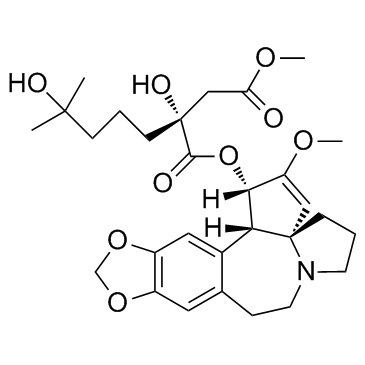


![1-((1R,4S,5S)-3-methoxy-9,11,21-trioxa-17-azapentacyclo[15.3.1.01,5.06,14.08,12]henicosa-2,6,8(12),13-tetraen-4-yl) 4-methyl (2R)-2-hydroxy-2-(4-hydroxy-4-methylpentyl)succinate Structure](https://image.chemsrc.com/caspic/277/197569-58-7.png) CAS#:197569-58-7
CAS#:197569-58-7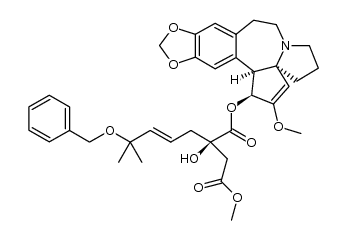 CAS#:1040272-14-7
CAS#:1040272-14-7 CAS#:67209-77-2
CAS#:67209-77-2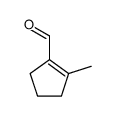 CAS#:81328-61-2
CAS#:81328-61-2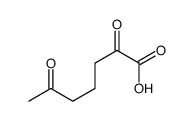 CAS#:84375-05-3
CAS#:84375-05-3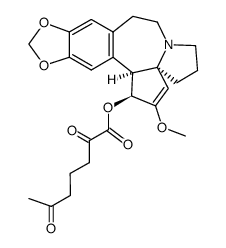 CAS#:84375-02-0
CAS#:84375-02-0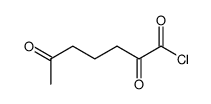 CAS#:84375-06-4
CAS#:84375-06-4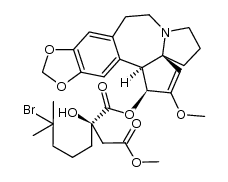 CAS#:244761-07-7
CAS#:244761-07-7
